QuestionI have a 20 gallon tank, with both a undergravel filter, and hang on filter that has been set up for about a month. It houses 4 red eyed tetras that were added about a week after initial set up. 1 male dward groumi added 2 weeks after, and a male and female guppy added another week later.
My water was starting to smell like urine, but my ammonia was only testing .25. I completed about a 15% water change on Tuesday, but the smell was stil bad. Another water change was comleted on Thursday. I changed the filter (not the bio wheel) as well as filter cartridges for the under gravel with ammonia chips. After doing this work on Thursday, the ammoni sky rocketed to 8.0 but the water got crystal clear. By Friday, the water has become cloudy and smelly again, and the ammonia is even higher. It is testing blue, which is not even on the chart.
Through out all of this, my fish do not seem to be bothered. They are all eating, and seem to be doing well with the excception of the Groumi, he seems like he is on speed.
Also, when I changed my filter cartridge, it was caked with pink stuff.. that was Thursday, my new filter already has this pink stuff on it.... two days later.
AnswerHi Eddie,
You really shouldn't have so many fish in a cycling tank. The fish are likely to die from the cycling process. They will get stressed, sick and then finally die. It's so much easier, faster and cheaper(not to mention less frustrating!) to do a fishless cycle but it's sort of a moot point now.
Was the tank and accessories new? Sometimes people buy used tanks and the parts are old or haven't been cleaned well (or cleaned with something that leaves a toxic residue) and this can cause the tank to smell.
Your ammonia skyrocketed after you changed the filter cartridge because what you did was throw out a huge chunk of the beneficial bacteria that your tank had accumulated thus far that was eating the harmful and fatally toxic ammonia and nitrites. I hate, hate, hate disposable cartrdiges because even after you do get through this cycling period tossing out those cartridges can mean throwing off your cycle. If you must keep the hang on with the disposable cartridges, at least add a Hagen Biomax insert. This is a mesh bag with white cylinders and this hosts and stores your beneficial bacteria. You never throw this away and you never rinse it in tap water. To clean it you simply rinse it in water that came from tank during routine maintenance in a bucket and put it back in the filter. This way when you chuck a cartridge to replace it the consequences won't be a gigantic ammonia spike.
I never advocate the use of ammo chips, ever. Using these products not only slows your cycling process down it can give you false readings when you test your tank for ammonia, leading you to believe you have a lot more or a lot less than you really have. The only way to REMOVE ammonia is partial water changes so I would toss out the ammo chips asap. The urine smell can be caused not only by ammonia but by the use of ammonia 'reducing' products.
What you need to do after inserting the Biomax into your filter and chucking the ammo chips is to lower the temp to 75 F, as ammonia is less toxic at this temp. Only feed each fish food about the size of their eyeball every 2-3 days to preserve the water quality. Do one large 50% water change and double dose a product called Seachem's Prime. This will be in place of your usual water conditioner. Prime will stripe the chlorine, chloramines and reduce the toxic effect of the ammonia and nitrite pollutants.
Now do 25% water changes every other day, double dosing the Prime in the new water and doing a good gravel cleaning once a week. This will slow down your cycling process but if you don't do this your fish will succumb to the toxicity in the water and die.
It's very typical in the cycling process to have ammonia hit 8.0-10.0 before it starts to fall and even then you are still not out of the woods once it falls to flat 0, which is where it always should be with fish present. Ammonia converts to nitrites, which you should also be testing for and these too are toxic and will rise like ammonia and then fall to flat 0. Then you'll see nitrates rise. Nitrates should always be 5-20 ppm in a healthy tank. You won't know when to stop doing the excessive water changes until you have flat 0 ammonia, flat 0 nitrite and 5-20 ppm nitrates.
Test your water every few days to see where your tank results stand and keep an eye on the fish for stress (clamped fins, sitting on bottom, staying at the top, lethargy, etc.).
Good luck :) April M.

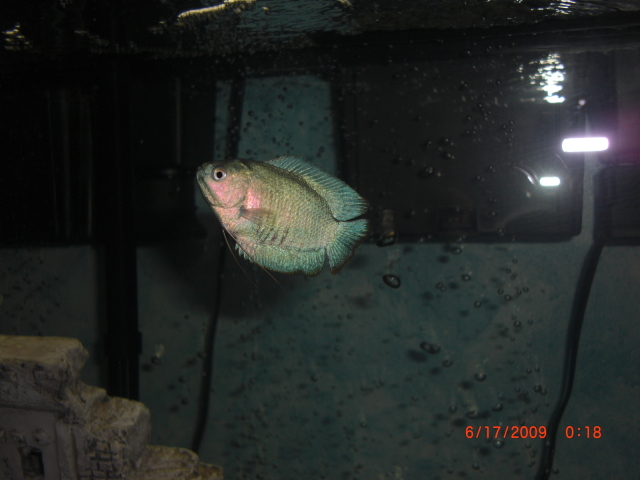 POWDER BLUE DWARF GOURAMI
Question
POWDER BLUE DWARF GOUR
HI. I JUST WANT TO KNOW
POWDER BLUE DWARF GOURAMI
Question
POWDER BLUE DWARF GOUR
HI. I JUST WANT TO KNOW
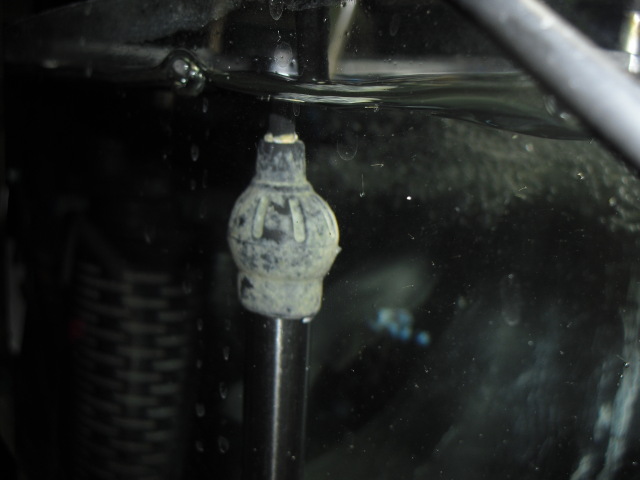 white algae on heater and filter tubes
Question
White algae
There has been a white, pale-green
white algae on heater and filter tubes
Question
White algae
There has been a white, pale-green
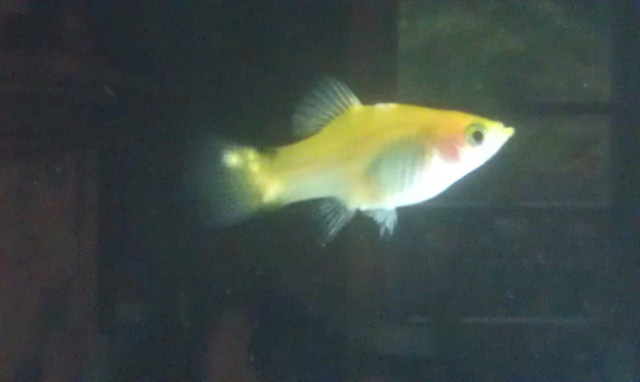 Large white patches
Question
Yellow Platy with spot
Ive had this fem
Large white patches
Question
Yellow Platy with spot
Ive had this fem
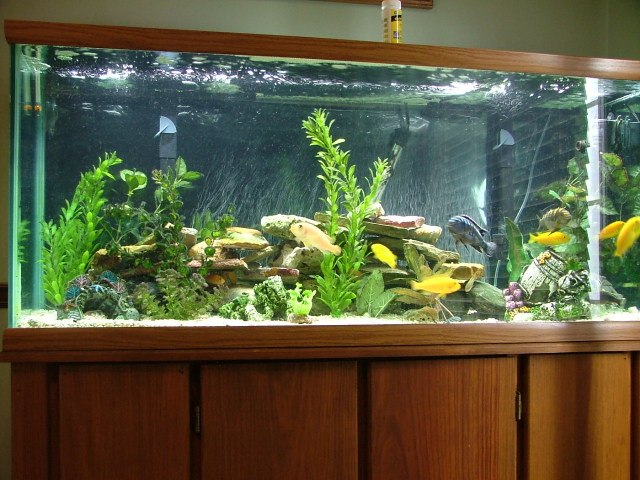 African Cichlids just moved tank and am paranoid!
Question
75 gal malawi tank
hello,
Ive kept fish for ye
African Cichlids just moved tank and am paranoid!
Question
75 gal malawi tank
hello,
Ive kept fish for ye
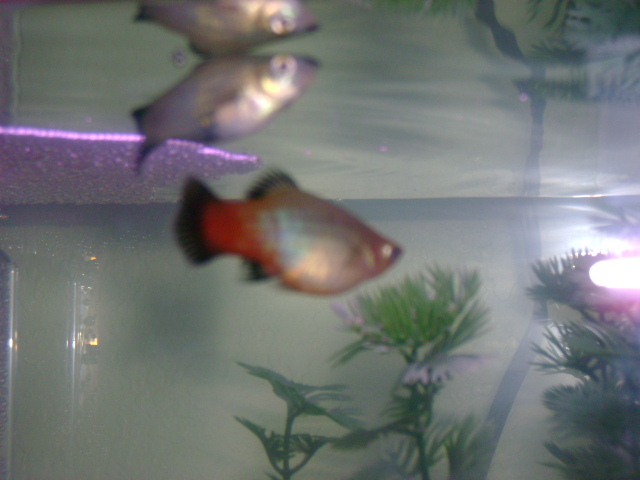 is my fish pregnant and was it labeled correctly in store?
Question
pregnant fish?
I bought a male and 2 females o
is my fish pregnant and was it labeled correctly in store?
Question
pregnant fish?
I bought a male and 2 females o